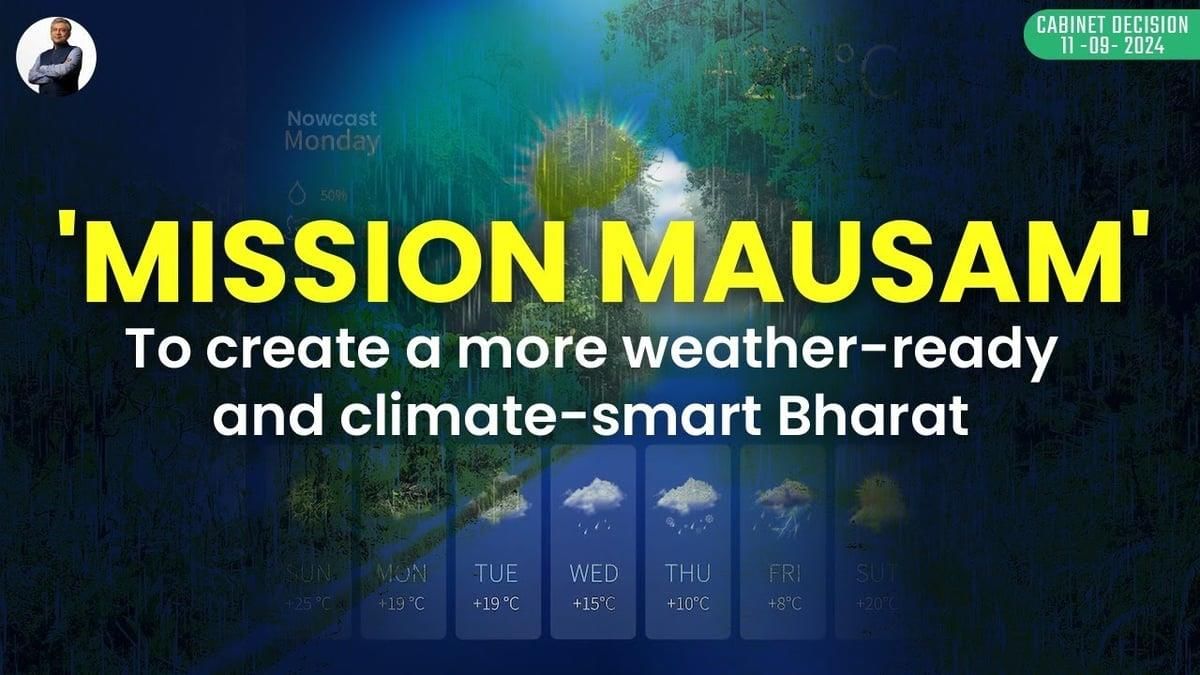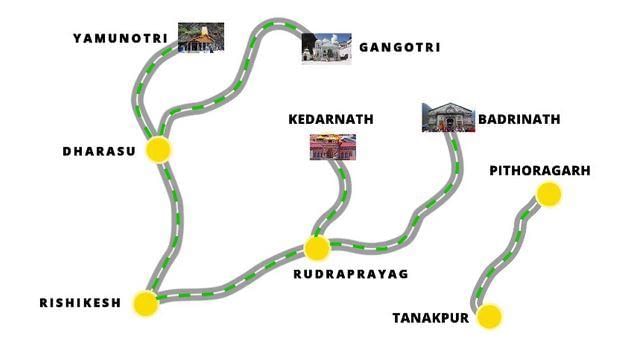UPSC Exam > UPSC Notes > Current Affairs & Hindu Analysis: Daily, Weekly & Monthly > The Hindu Editorial Analysis- 19th October 2024
The Hindu Editorial Analysis- 19th October 2024 | Current Affairs & Hindu Analysis: Daily, Weekly & Monthly - UPSC PDF Download

Forecasting better in India, come rain or shine
Why in News?
- India is becoming more at risk from severe weather events like floods and droughts, which are made worse by climate change.
- There is a need for better weather forecasting and easier access to data to help manage these risks.
- The newly started program called “Mission Mausam” aims to make India more prepared for weather changes.
- This mission focuses on improving radar coverage and ensuring that the public has access to important weather data.
Introduction
- The monsoon season in India has experienced some of the worst flooding in recent years, impacting numerous states.
- A study conducted in 2021 by the Council on Energy, Environment and Water (CEEW) revealed that 40% of districts in India face changing climate issues, including droughts in dry periods and flooding during the monsoon.
- Another report from CEEW found that there has been a 64% rise in the number of heavy rainfall days during the monsoon season over the past decade.
Need for Enhanced Weather Forecasting
- Nearly two-thirds of India's people face risks from floods.
- However, only one-third of them have access to early warning systems for floods.
- This situation is different from cyclone early warning systems, which are available in all areas that are prone to cyclones.
- There is a urgent need for India to put more money into improving weather forecasting.
- This investment is important to help reduce the dangers caused by extreme weather events.
Mission Mausam: A Step Forward in Weather Readiness
- Launched in September 2024, Mission Mausam aims to expand India's weather observation network.
- The initiative focuses on improving forecasting models and researching weather modification techniques.
- This project is led by the India Meteorological Department (IMD), the National Centre for Medium Range Weather Forecasting (NCMRWF), and the Indian Institute of Tropical Meteorology (IITM).
- All these organizations operate under the Ministry of Earth Sciences.
- With a budget of ₹2,000 crore, the mission aims to enhance weather observation using various instruments.
- It also seeks to improve forecasting by using machine learning techniques and gaining a better understanding of atmospheric physics.
Gaps in Radar Coverage and Data Access
- Radar Coverage:
- India has 39 Doppler Weather Radars (DWRs) that monitor rainfall.
- Each radar can cover an area with a radius of 250 km.
- These radars provide short-term forecasts for heavy rainfall, ranging from minutes to hours.
- Certain areas, particularly on the western coast and in major cities like Ahmedabad, Bengaluru, and Jodhpur, do not have enough radar coverage.
- These regions are at risk of flooding and need better monitoring.
- Mission Mausam should focus on placing radars in these high-risk locations to help prepare for extreme weather events.
- Weather Data Access:
- It is important to have open access to weather data for researchers and businesses.
- This access helps in creating localized early warning tools and studying weather patterns.
- Countries like the U.S., U.K., and France provide open access to their weather forecasting data, which encourages innovation.
- In India, the Indian Meteorological Department (IMD) shares data through a portal, but access is limited for academic researchers and think tanks.
- To improve research and decision-making, Mission Mausam should make data from weather radars, wind profilers, and forecasting models available to the public.
Enhancing Communication Tools for Weather Warnings
Improving User Capacity:
- The IMD provides weather alerts through web and mobile apps, giving forecasts for each district up to four days ahead.
- While these tools are helpful, they could be even better by giving users advice on how to understand the warnings.
- Mission Mausam should aim to enhance the user experience by offering informative videos, guides, and media that assist users in understanding and responding to weather warnings effectively.
Conclusion: A Timely and Crucial Initiative
- Mission Mausam is a timely initiative from the government aimed at making India more prepared for climate challenges.
- The goal is to help India become more climate-smart and ready to handle severe weather conditions.
- With an enhanced network for weather observation and better prediction methods, this mission seeks to improve the way weather information is collected and shared.
- The initiative has the potential to change how people understand and use weather data, making it more accessible and reliable.
A perilous highway to salvation in the Himalayas
A perilous highway to salvation in the Himalayas
Why in News?
- The Char Dham Highway Project is designed to enhance religious tourism in the state of Uttarakhand.
- This project has resulted in more frequent landslides and environmental damage because of improper road-widening methods.
- Experts and various studies point out the serious ecological effects of such construction in delicate mountain areas.
- Despite the environmental concerns, the government defends the project by citing national security reasons.
Introduction to the Char Dham Highway Project
- The Char Dham Highway Project is a two-lane highway that spans 900 kilometers. Its main goal is to enhance religious tourism to the four Char Dham shrines located in Uttarakhand.
- This project has a budget of ₹12,000 crore, but it has faced criticism due to its harmful effects on the mountain ecosystem.
- Experts have expressed worries about the unscientific approach of the project, which has already caused considerable environmental harm.

Environmental and Governmental Negligence
- The government has defended the project by saying it is important for better connectivity for both tourists and military movements.
- This project goes against environmental regulations and takes advantage of technical loopholes to avoid getting the necessary approvals.
- The delicate ecosystem in the area is already suffering from activities like blasting and cutting into slopes, which lead to ground subsidence and further damage to the environment.
Supreme Court Involvement and Project Justification
- The Supreme Court initially preferred a smaller road width of 5.5 meters.
- Later, they approved the project for the sake of national security.
- The project was argued to be essential for troop movement.
- Critics believe that airlifts could effectively handle emergencies instead.
Scientific Assessment and Project Impact
- The absence of scientific evaluation for major projects in the delicate Himalayan region is concerning.
- Road construction has caused instability in the area, resulting in frequent landslides, blocked roads, and injuries.
- Research indicates that these building efforts are causing hidden disasters, such as ground sinking in towns like Joshimath and impacting historic sites like the Tungnath temple.
Local Distress and Depopulation
- Infrastructural projects have led to a decline in population in rural areas of Uttarakhand.
- Many villages are now deserted, with residents moving away from farming to jobs in tourism due to environmental damage and low income from agriculture.
- The state government is trying to stop the sale of land to people from outside the area, but the ongoing environmental harm is forcing locals to leave their homes.
Environmental Double Standards
- The government's speeches about climate change resilience are very different from its infrastructure projects in the Himalayas, which are often prone to disasters.
- There is a strong need for sustainable and environmentally friendly solutions to tackle the environmental crisis in this area.
Conclusion
The Char Dham Highway Project exemplifies the government’s disregard for environmental norms and mountain ecology.
Without proper scientific assessments and sustainable planning, the project is likely to cause long-term damage to both the environment and local communities.
The document The Hindu Editorial Analysis- 19th October 2024 | Current Affairs & Hindu Analysis: Daily, Weekly & Monthly - UPSC is a part of the UPSC Course Current Affairs & Hindu Analysis: Daily, Weekly & Monthly.
All you need of UPSC at this link: UPSC
|
38 videos|5288 docs|1117 tests
|
FAQs on The Hindu Editorial Analysis- 19th October 2024 - Current Affairs & Hindu Analysis: Daily, Weekly & Monthly - UPSC
| 1. What are the main challenges faced by travelers on the perilous highway in the Himalayas? |  |
Ans. Travelers on the perilous highway in the Himalayas face numerous challenges, including treacherous weather conditions, landslides, and narrow roads that can be hazardous. The remote terrain often lacks proper infrastructure, making navigation difficult, and there are limited rescue and medical facilities available in case of emergencies.
| 2. How does the highway contribute to the local economy in the Himalayas? |  |
Ans. The highway plays a crucial role in boosting the local economy by facilitating trade and tourism. It allows for the transportation of goods and services, which can enhance local businesses. Additionally, improved access to remote areas encourages tourism, providing income and employment opportunities for local communities.
| 3. What measures are being taken to improve safety on the Himalayan highway? |  |
Ans. Various measures are being implemented to improve safety on the Himalayan highway, including the installation of safety barriers, regular maintenance of the road, and the use of advanced weather monitoring systems. Authorities are also conducting awareness campaigns for drivers regarding safe travel practices in mountainous areas.
| 4. How does the perilous nature of the highway impact local communities? |  |
Ans. The perilous nature of the highway can significantly impact local communities by isolating them during adverse weather conditions, hindering access to essential services like healthcare and education. Conversely, when the highway is safe, it can connect communities to broader markets and opportunities, leading to economic development.
| 5. What role does tourism play in the context of the Himalayan highway? |  |
Ans. Tourism plays a vital role in the context of the Himalayan highway as it attracts visitors seeking adventure and natural beauty. This influx of tourists can lead to the development of hospitality services and infrastructure, providing economic benefits to local populations. However, it also raises concerns about environmental sustainability and cultural preservation.
Related Searches





















